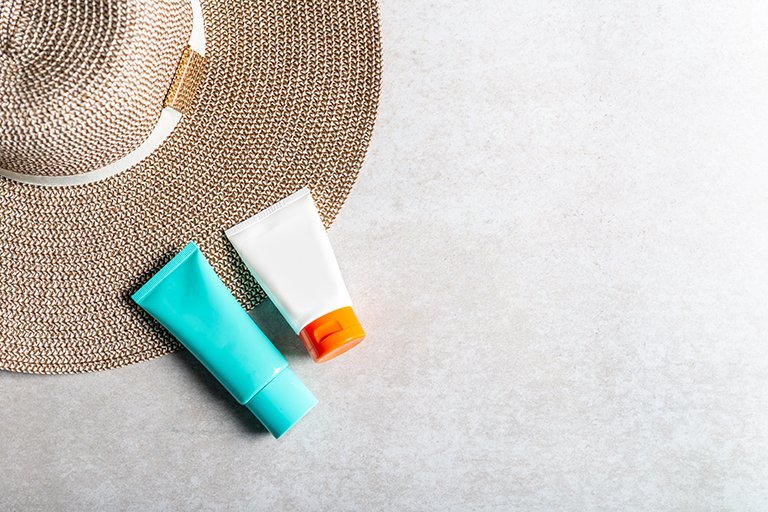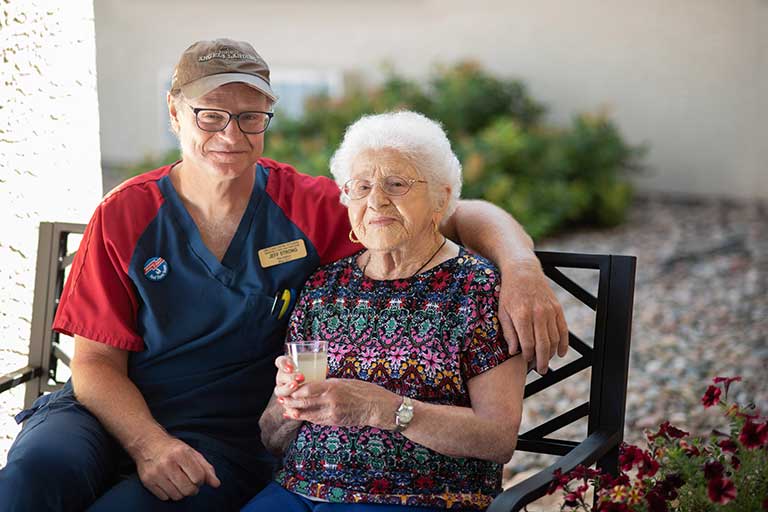
Protect your skin with sunscreen
Whether you’re sitting on your back porch or going for a walk around the block, sunscreen should be an important part of your everyday skincare routine. National Sunscreen Day is May 27, and it’s just in time for summer. Knowing the significance of sunscreen and the harmful effects of ultraviolet rays is beneficial as the weather becomes warmer, and as we find ourselves spending more time outside.
Although it’s nice to have a golden tan, UV radiation is not good for the skin. According to the Skin Cancer Foundation:
- One in five Americans will develop skin cancer by the age of 70.
- Having five or more sunburns doubles your risk for melanoma.
- About 90 percent of nonmelanoma skin cancers are associated with exposure to UV radiation from the sun.
- People who use sunscreen with an SPF of 15 or higher daily show 24 percent less skin aging than those who do not use sunscreen daily.
The history of sunscreen
In the 1930s, Franz Greiter, a Swiss chemistry student, experienced a sunburn while climbing Mount Piz Buin and set out to create sunscreen. In 1946, Greiter’s sunscreen called Gletscher Crème went to market under the brand Piz Buin. His brand is still sold today.
Sunscreen and the science behind it have evolved since 1946. Researchers have discovered that there are two types of ultraviolet rays that can affect your skin – UVA and UVB rays. UVB rays are usually the culprits that cause skin cancer, while UVA rays penetrate deeper into the skin, causing premature skin aging.
Why is sunscreen important?
The American Cancer Society says that skin cancer is by far the most common cancer. That’s why applying sunscreen when you may be exposed to UV rays is important – to minimize your risk of developing skin cancer.
Sunscreens come in gels, creams, lotions and aerosol sprays. Whatever type of sunscreen you decide to use, the amount of sun protectant factor, or SPF, in it is what will protect you from UV radiation.
Dr. Steven Q. Wang, director of Dermatologic Surgery and Dermatology at Memorial Sloan Kettering Cancer Center in Basking Ridge, New Jersey, says, “The SPF number tells you how long the sun’s UV radiation would take to redden your skin when using the product exactly as directed versus the amount of time without any sunscreen. So ideally, with SPF 30 it would take you 30 times longer to burn than if you weren’t wearing sunscreen.”
Sunscreen is most effective when you apply it 30 minutes before going outside and then reapply it every two hours but immediately following swimming or sweating. The Skin Cancer Foundation recommends applying one ounce of sunscreen to your entire body and using a sunscreen that has an SPF of 30 or higher, is water-resistant and is broad spectrum.
What does “broad spectrum” mean?
Broad spectrum is a term that brands use to let their consumers know that their sunscreen protects against UVA and UVB rays. In the past, many companies used this term without having guidelines to follow. Any brand could say that it was “broad spectrum,” but it didn’t have to meet any requirements in order to do so. The Skin Cancer Foundation says that in 2011, the FDA issued new rules for sunscreen labeling. This meant that brands who claimed that their sunscreen was broad spectrum needed to meet FDA standards before it could be labeled as such and put on the market.
Protecting your skin from the sun is a must. Practicing good sunscreen habits will shield your skin from harmful UVA and UVB rays while you enjoy your time in the sun. Don’t forget to apply one ounce of broad spectrum, water-resistant sunscreen with an SPF of 30 or higher this summer. Your skin will thank you!

